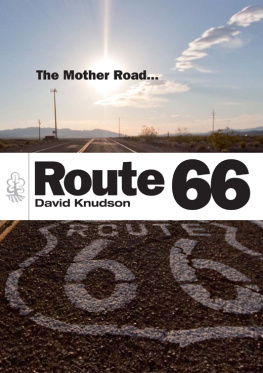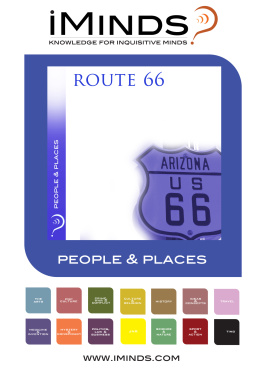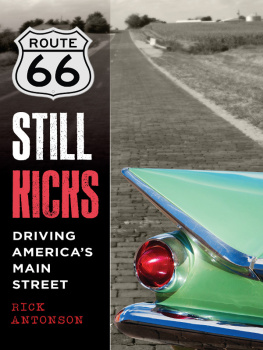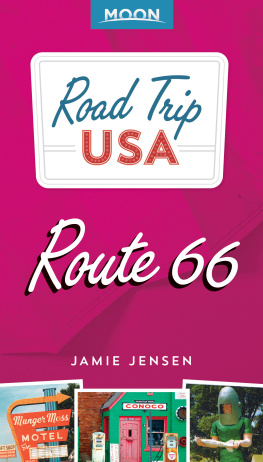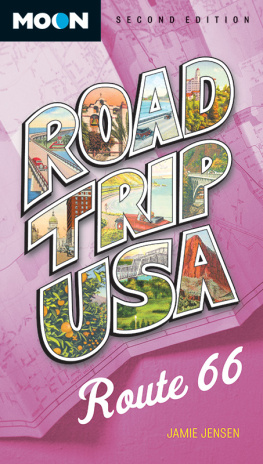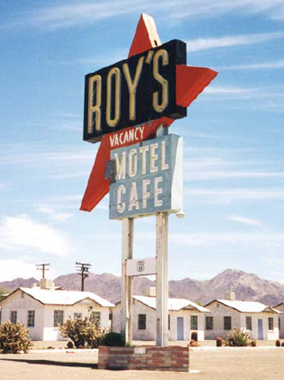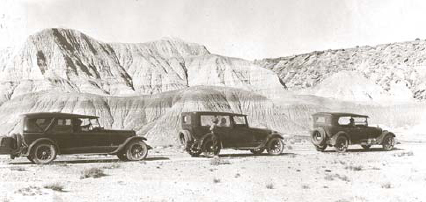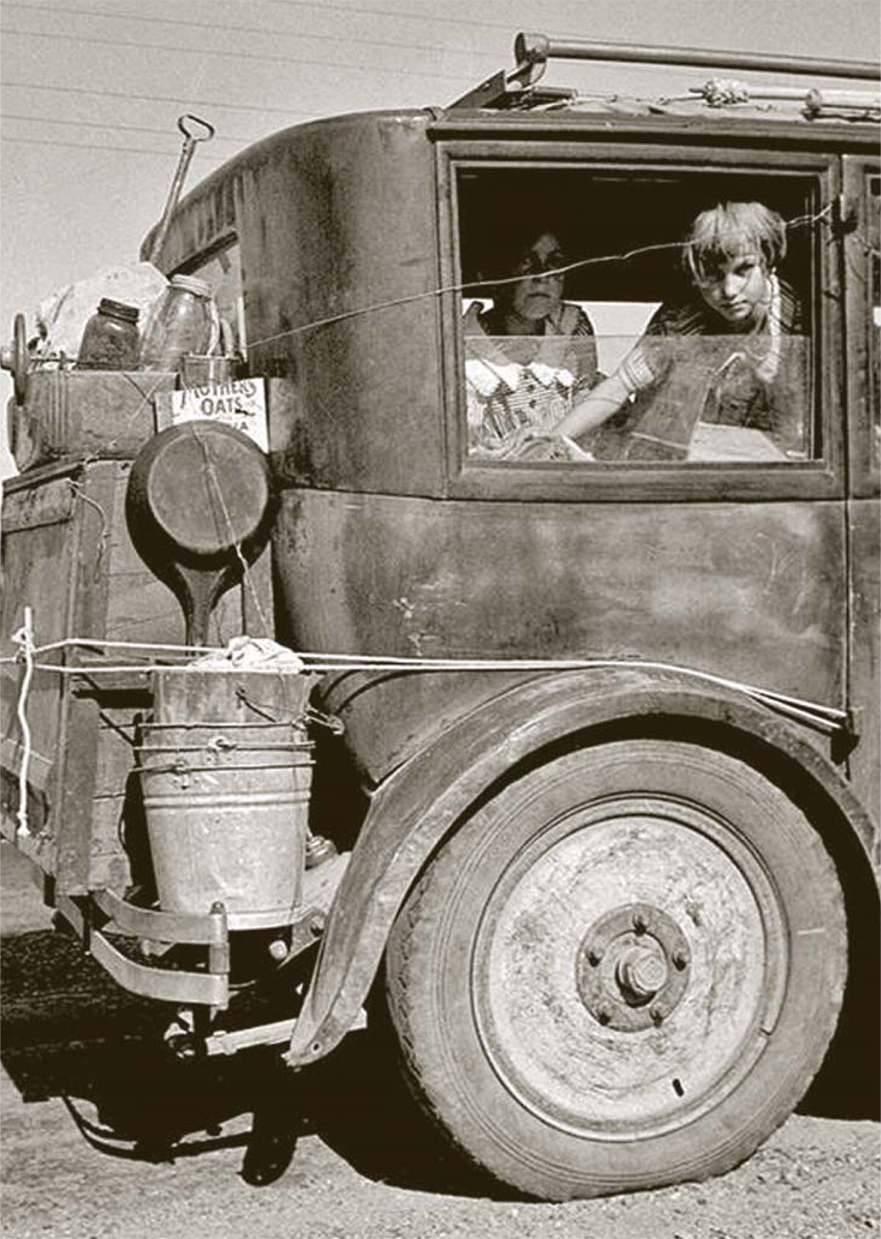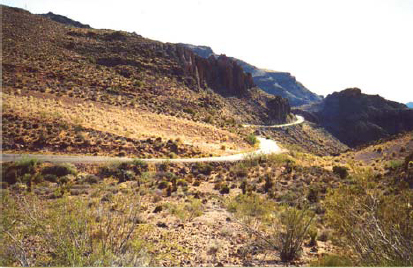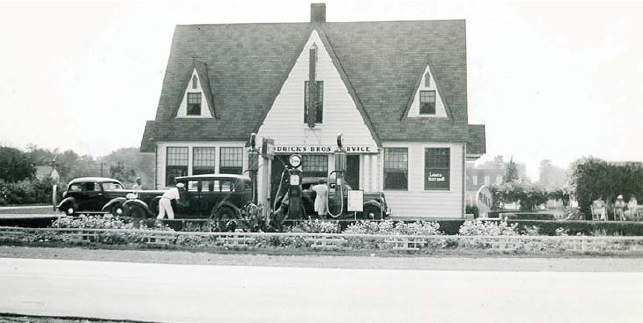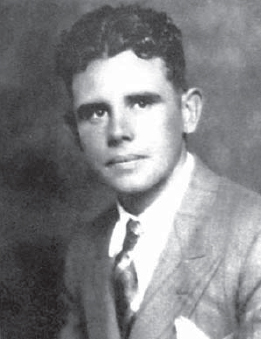ROUTE 66
David Knudson
SHIRE PUBLICATIONS
Opened in 1938, Roys was more than a desert mirage for weary travelers.
CONTENTS
It was common for travelers to caravan together for physical and moral support as they drove across the desert. Here a caravan stops, likely to let cars and passengers alike cool down.
From the 1930s through the 1940s, it is estimated that 210,000 people fled the Dust Bowl in the Midwest in all manner of conveyance and migrated to California. John Steinbeck immortalized their plight in his epic novel, The Grapes of Wrath.
THE BIRTH OF ROUTE 66
THE BEGINNING
Cyrus Stevens Avery (August 31, 1871July 2, 1963) of Tulsa, Oklahoma, was known as the Father of Route 66. Born in Stevensville, Pennsylvania, Avery eventually became one of Oklahomas best-known highway advocates and civic leaders.
After moving with his parents to Missouri in 1881, young Avery had little formal education. At the age of nineteen, however, he qualified to teach in a country school. He then worked his way through William Jewell College in Liberty, Missouri, graduating in 1897. In 1901, he moved to what was then known as Oklahoma Territory and sold life insurance in Oklahoma City. In 1904, he moved his business to Vinita, Oklahoma, and expanded into real estate loans. Then, foreseeing a strong future in the emerging oil industry, he relocated to Tulsa and launched Avery Oil and Gas Company in 1907.
Averys interests were varied, reaching far beyond the oil industry to farming, real estate development, and government. He served on the Tulsa County Commission from 191316 and on the Tulsa Water Board in the early 1920s, where he was instrumental in bringing water to the rapidly growing city.
Goldroad/Sitgreaves Pass, Arizona, is an early stretch of Route 66 between Oatman and Kingman that was modern in its day. The road was challenging to build and remains a challenge to motorists today. The harrowing stretch was mercifully bypassed by the divided, two-lane interstate early in 1953.
Cyrus Stevens Avery of Tulsa, Oklahoma, was known as the Father of Route 66. He was nearly singlehandedly responsible for the development of Route 66.
Avery believed that well-planned and maintained roads and a system of interstate highways would bring prosperity to Oklahoma and its towns and cities. He became an avid member of several transcontinental road associations that were working to improve roads throughout the country, including the Oklahoma Good Roads Association, the Albert Pike Highway Association, and the pre-World War I National Ozark Trail Association.
Modern roads were not appreciated by everyone, however, particularly in the farm belt. Many opposed the taxes they generated, and those who drove slow-moving farm equipment along the roads often felt threatened by faster vehicles. But Avery saw beyond that fear to the futurea future that would be driven by automobiles.
Avery soon spearheaded the National Ozark Trail Association. (The trail itself eventually evolved into U.S. Highway 66.) He served as vice president of the U.S. 66 Highway Association in 1927, and the U.S. Department of Agriculture placed him on the Joint Board of Interstate Highways from 192527. During this time, he also served as one of Oklahomas highway commissioners from 1922 through 1926.
A look at the Farmersville filling station in Illinois.
The 1920s saw the notion of a national highway system take off. Legislation for public highways had first appeared in 1916 with the Federal Aid Road Act, with revisions made in 1921 with the Federal Aid Highway Act, but it was not until Congress amended and authorized existing legislation in 1925 that the government executed its plan for national highway construction.
Avery was one of the national highway systems biggest supporters. He avidly promoted the concept of a transcontinental highway between Chicago and the Pacific Coast. His dreams were realized when they finally merged with the national program of highway and road development in the 1920s.
A natural salesman, Avery wanted the highway to be designated as Route 66 because he thought the double sixes were catchy and that the name would make the new road easy to promote for business purposes. But the numbers did not fit into the numerical template established for American highways at the time. Instead, the numbers 60 and 62 were preferred by many because they fit the highway system template. Avery continued to fight for the name, but highway officials and politicians alike battled him for months, nearly defeating his ideaan idea that would become famous.
At the last minute, Avery prevailed and 66 was assigned to the Chicago-to-Los Angeles route in the summer of 1926. Route 66 was commissioned as a federal highway on November 11 of the same year.
From the beginning, public road planners intended U.S. 66 to expand the nations economy by connecting the main streets of rural and urban communities. At the time, many small towns had no prior access to a major national thoroughfare. There was no way to predict the sweeping changes Route 66 would effect in the years ahead.
The unlikely winner of the 3,423-mile Bunion Derby was Andy Payne, a Cherokee Indian farm boy from Foyil, Oklahoma. The footrace was the first substantial Route 66 promotion and was followed by an endless stream of races, cruises, caravans, rides, and walks that continue to take place along the road today.
PROMOTING ROUTE 66
Almost from the outset, various leaders, promoters, and entrepreneurs were extolling the virtues of the new highway. The first notable Route 66 promotion took place from March 4 through May 26, 1928. It was a footrace called the Bunion Derby, and it set the pace for the many races, cruises, caravans, rides, and walks that continue to take place today.
The Bunion Derby was the brainstorm of sports promoter and entrepreneur Charles C. C. C. Pyle (18821939), often called Cash and Carry Pyle. He was a theater owner and sports agent who represented a number of sports celebrities, including football star Red Grange of the Chicago Bears. Grange, known as the Galloping Ghost, agreed to help Pyle with his transcontinental marathon.

